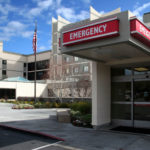[su_box title=”Keep in mind…” style=”default”]
- One trip to the emergency room can cost over $3000
- Health insurance plans may not cover all of the expense
- You will be billed separately for each procedure and test performed
[/su_box]
Most people are shocked when they receive the bill for an emergency room trip. The average bill is $3000 or more. Every service and department of the hospital will bill you.
You may also receive separate bills for tests or services from departments other than the emergency room.
These costs can go up significantly if you need to be admitted or require surgery and often end up costing $10,000 or much more.
Find affordable health insurance by entering your zip code above!
What does my health insurance cover?
If you have health insurance, you may not have to pay all these bills. However, even with the best health insurance, many policies only cover a certain portion of your bills, and you will only be responsible for your co-pay.
You need to read your policy and talk to your health insurance company to know what is covered.
What are the costs of an emergency room visit?
While these extra costs are not hidden when you get the bill, they may be higher than you thought.
Emergency rooms are used to treat a variety of problems, so they do not have a set price. This means you pay for everything used in your treatment separately.
You will be charged for the visit, the nurse, and the doctor. You will also pay for each test run, and any technicians need to run or read the test.
Medications and intravenous fluids will be included if they are administered.
Sometimes you will be charged for the treatment, as well as the doctor who administered care.
The doctor is billing you for his time, and it may be sent as a separate bill. The hospital is billing you for their resources that were used during the procedure.
This does not only pertain to major surgeries, something as simple as a small wound repair can end up with a dozen invoices. If you require any anesthesia that will also be a separate cost.
Anesthesiologists have their own charges, so you will need to pay them as well as supplies or medications used by them.
They are licensed for most types of anesthesia and have to stay and monitor you the whole time you are under care in most cases.
Emergency rooms also charge more for items then what your primary care provider will. You should expect to pay higher costs for everyday items like medications and vaccines.
You may pay more for one pill in the hospital then a whole prescription will cost at the pharmacy.
If you arrive at the emergency room via ambulance, you will receive a bill from the city or county for the ambulance ride and any services provided in route to the hospital.
It may also come from a private company if the area you live in allows privatized companies to manage their ambulances.
How do I know if I need to go to the emergency room?
An estimated 55 percent of all cases treated in the emergency room are not emergencies.
This means spending money for treatments that weren’t necessary. Before going to the emergency room, you need to determine how serious your condition is.
If you would normally go to a doctor for this condition, you may not need to go the emergency room.
Illnesses such as colds, influenza, and ear infections are not considered emergencies. Additionally, minor cuts, rashes, and 1st-degree burns usually aren’t considered emergencies.
However, if you are experiencing any of the following you should immediately go to the emergency room:
- Shortness of breath
- Chest pain
- Difficulty speaking
- Vision changes
- Altered mental state
- Bleeding that is not easily controlled
- Sudden onset or severe pain
- Coughing or vomiting up blood
- Suicidal feelings
You should always use your best judgment. If you feel your condition may be life threatening, always seek treatment immediately.
Are there other options besides emergency rooms?
Many people go to the emergency room because they simply do not know what else to do. If you feel your condition warrants medical attention, but it’s not an emergency, you may have other options.
The first option is to call your primary care physician. If it is during their business hours, they may be able to fit you in to the schedule.
Doctors usually have a nurse on staff that can discuss your problem and help you decide whether to go to an emergency room.
Most doctors’ offices also have an on-call doctor who can help you determine if you need treatment right away. They may even be able to simply call in a prescription for a telephone consultation.
If you do not have a primary care physician or they cannot work you in, look for a 24-hour walk-in clinic in your area.
Most of them accept all major insurances and are usually less expensive than emergency room visits.
Before going to the emergency room, it’s best to have a good understanding of your options. Consult with your family physician first before making a decision.
Compare affordable health insurance quotes by entering your zip code below!
[su_spoiler title=”References:” icon=”caret-square” style=”fancy” open=”yes”]
- https://www.medicare.gov/part-d/
- http://obamacarefacts.com/obamacare-top-10/
- https://www.medicare.gov/coverage/anesthesia.html
- http://health.costhelper.com/emergency-room.html
- https://en.wikipedia.org/wiki/Primary_care_physician
- https://en.wikipedia.org/wiki/Health_insurance
[/su_spoiler]




